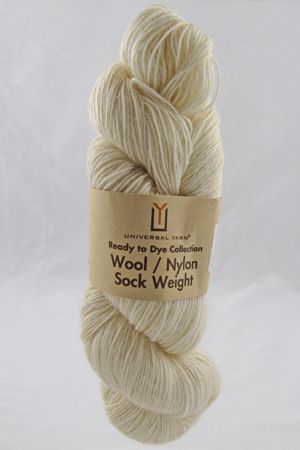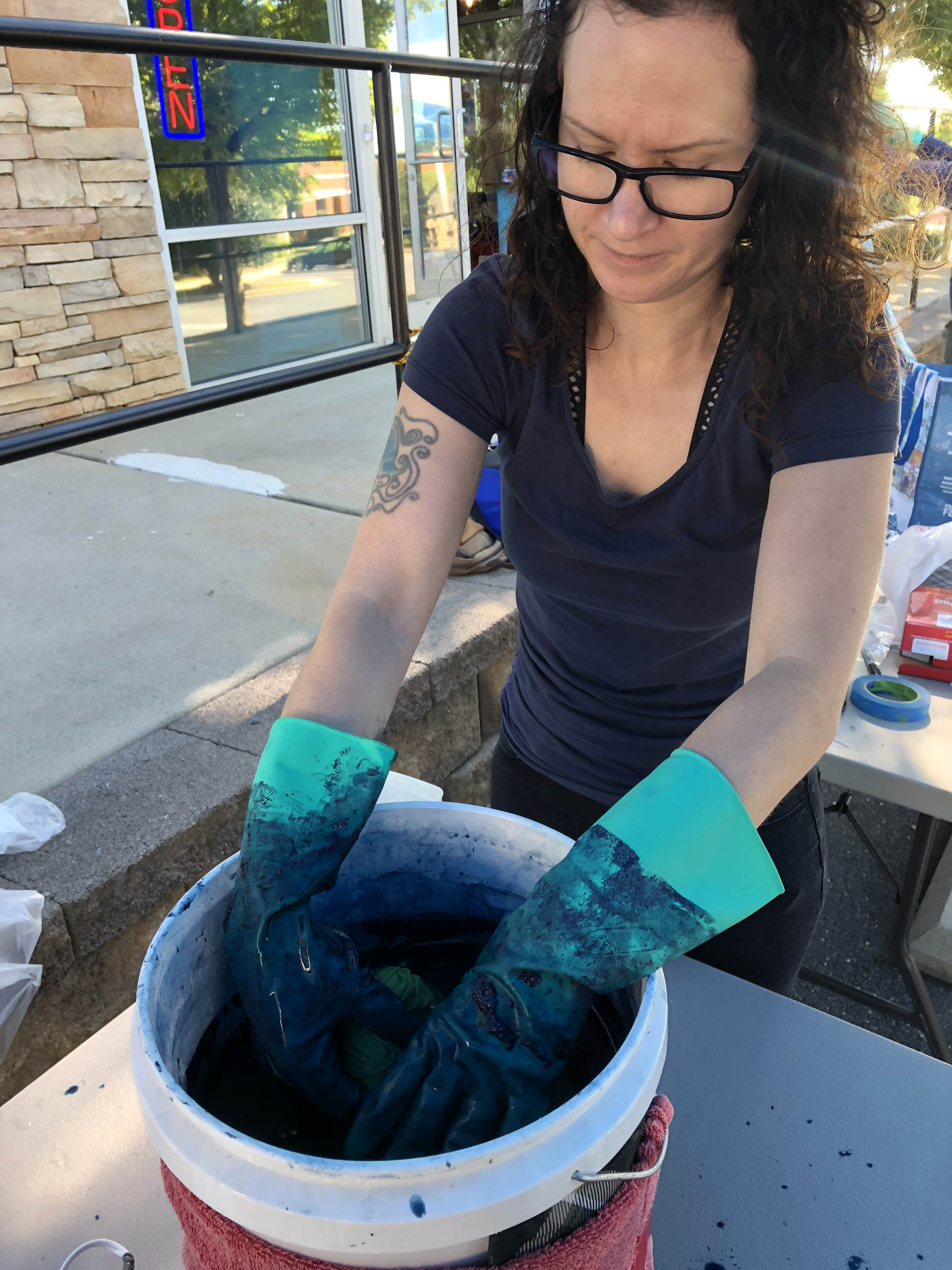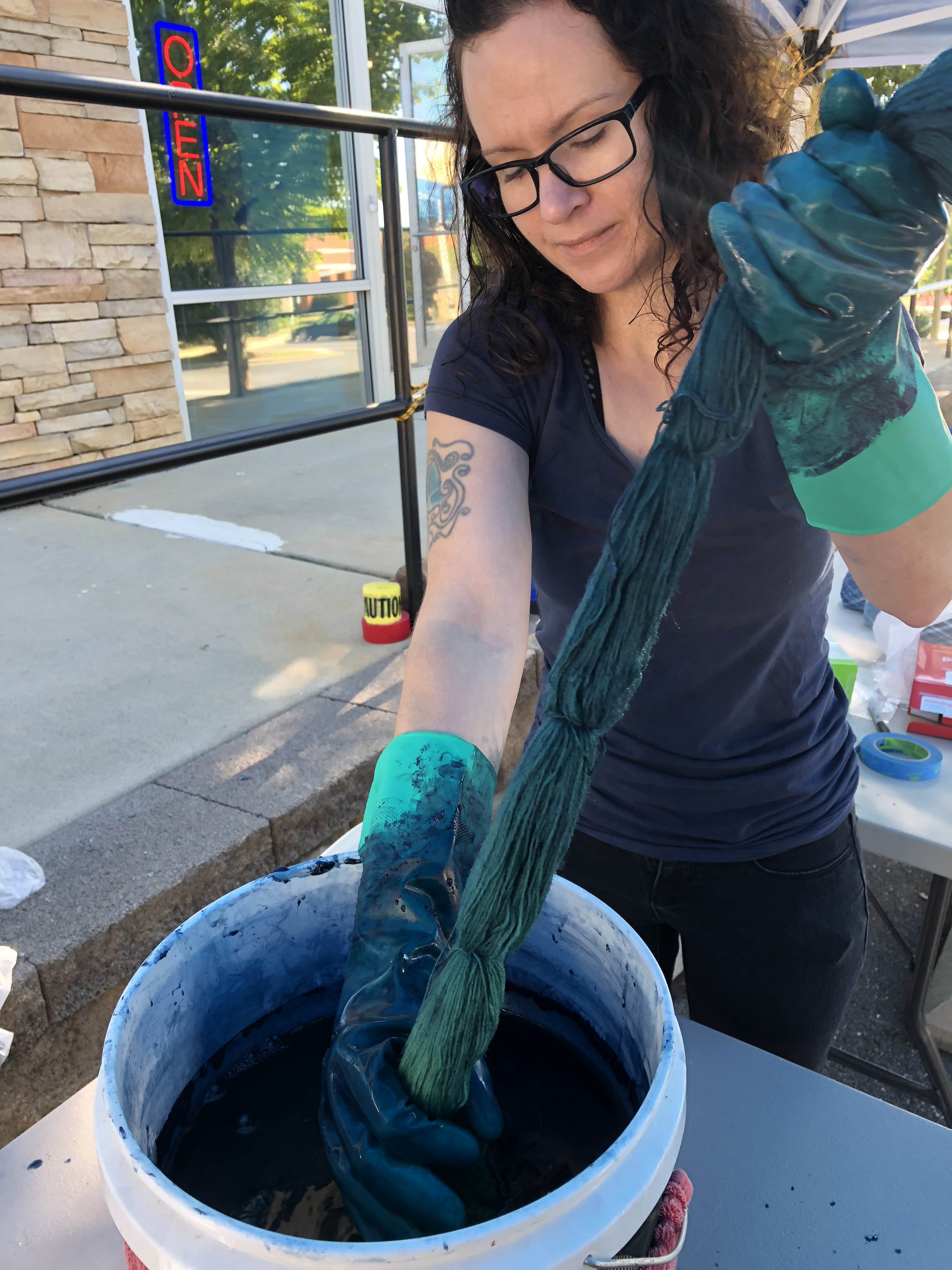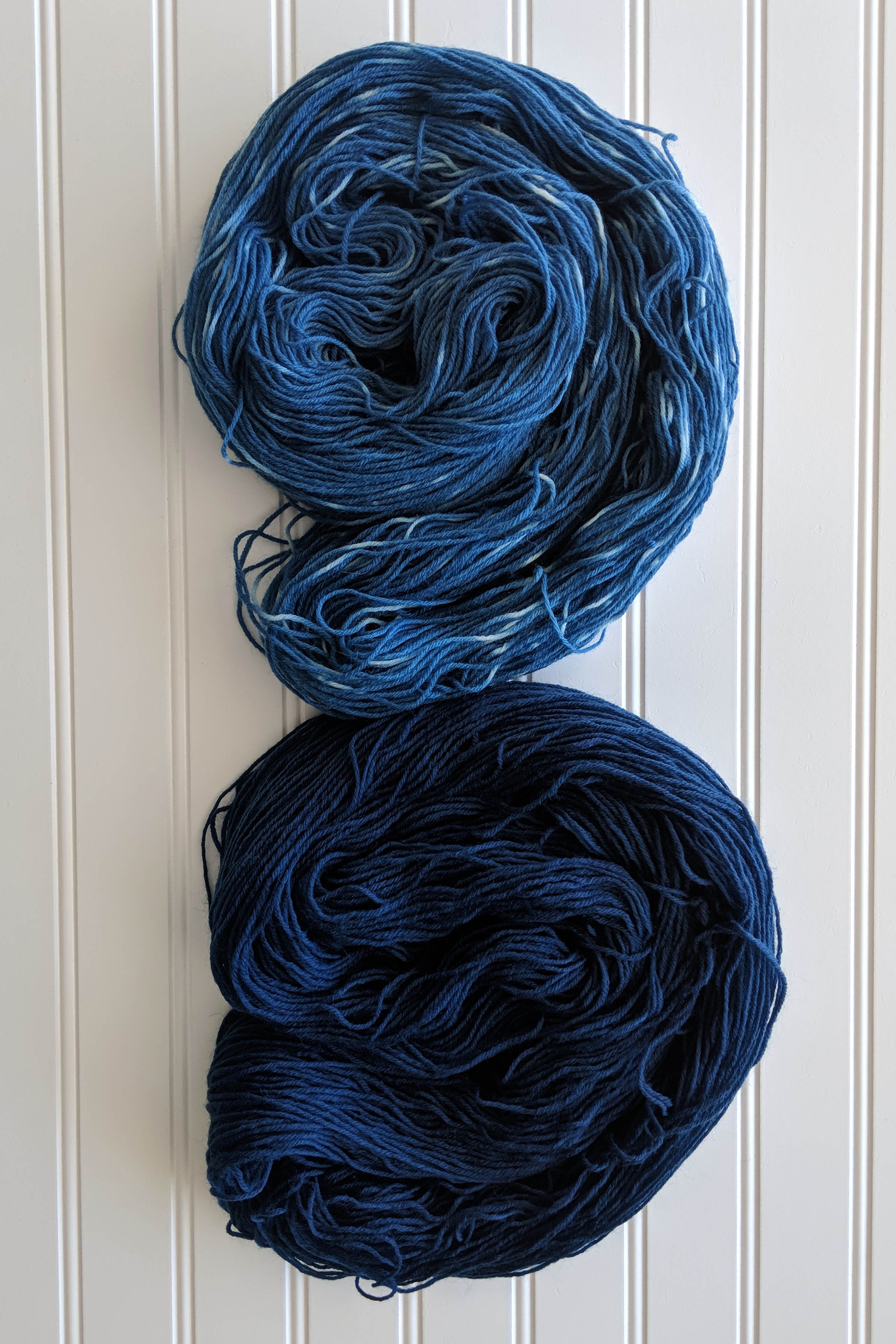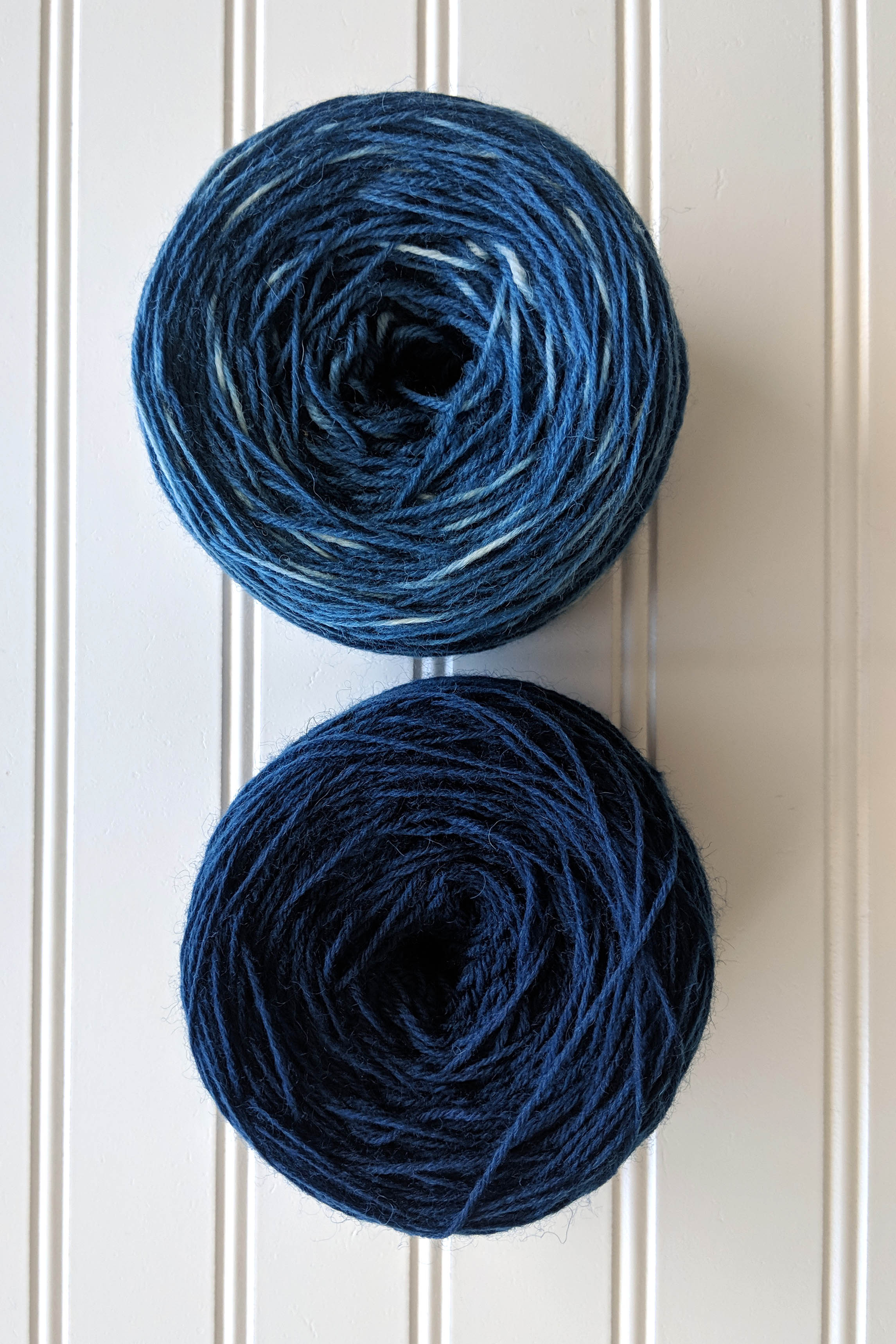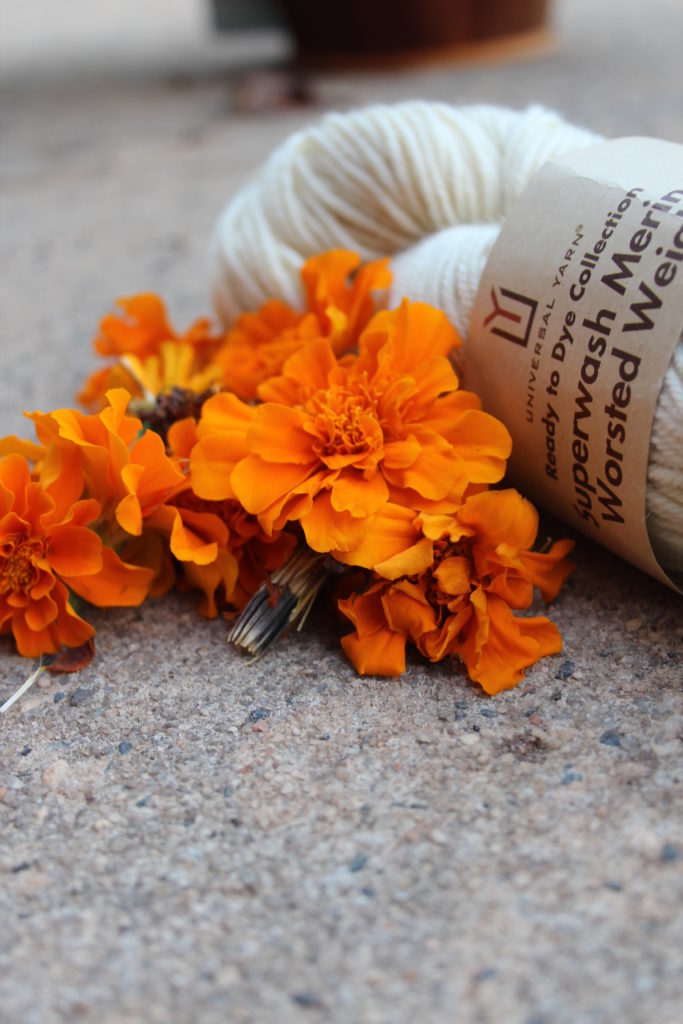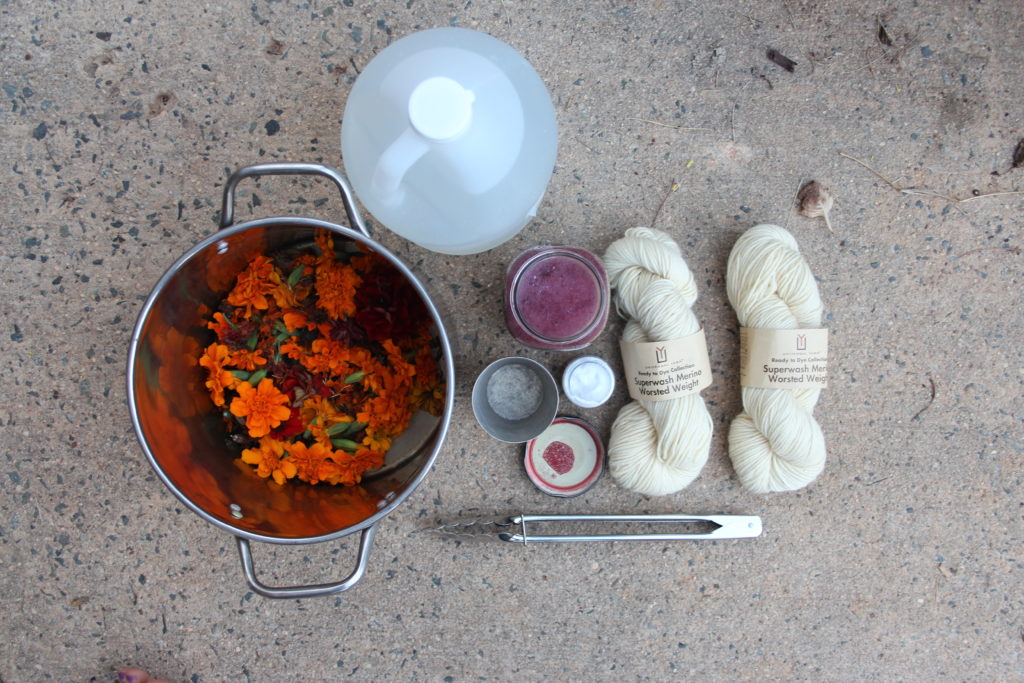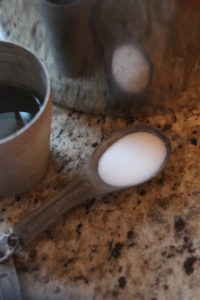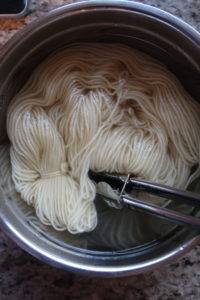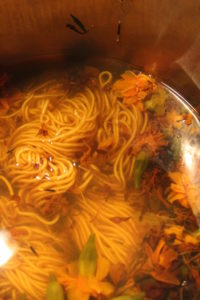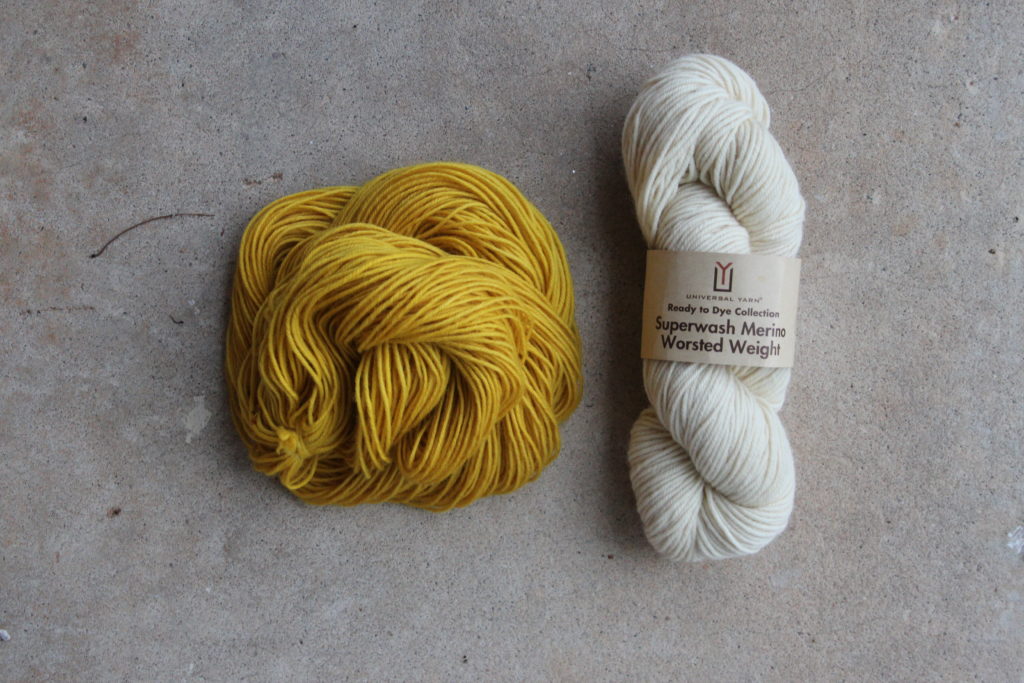I knit, crochet, sew, weave, and do a lot of other random crafty things. Dyeing, however, has been unexplored territory for me. When my good friend Sandi asked if I’d like to join her for an indigo dyeing class at LYS Cheers to Ewe, I said yes immediately. I love trying new things! So please keep in mind, this post is absolutely not written by an expert yarn dyer.
We happen to sell a nice variety of yarn especially for hand dyeing. Appropriately enough, we call it our “Ready to Dye” collection of yarns. I chose two skeins of our 02 Wool/Nylon blend to dye.
This class was taught by local fiber artist, Sue Helmken. When Sandi and I showed up for class with our yarn, Sue was already preparing indigo dye baths. This is a process that involves carefully mixing water, soda ash, salt, sodium hydroxide, and indigo. Though I’m fascinated by the science of it all, I was just as happy to be able to show up, dye my yarn, and skip the prep. But this is something I would love to explore more in the future. If only there were more hours in the day!
Since all of our hanks of undyed yarn looked the same, we had to tag skeins with our initials to tell them apart.
I plan to do a weaving project with my beautiful blue yarn, so I thought it would be fun to dye the hanks a bit differently.
Squeezing out the dye from my yarn. Even with gloves, I still managed to leave with blue arms!
To achieve different effects in the two hanks, I processed one of them in the dyebath twice for a deeper color. And for the other, I tied off a few spots tightly so that the dye wouldn’t reach them, and only processed it once.
The results were just what I expected. That’s always nice!
I’m planning to use one skein for warp and one for weft in a weaving project. Stay tuned!



